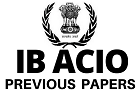sponsored links
Main Objectives of Monetary Policy
 The monetary policy has all along been much concerned with the growth of the economy and inflation. For long since 1951 and till the nineties, two sets of objectives have been pursued. First, the controlled expansion of money. It sought to achieve the twin objectives of meeting the needs of production and trade, and simultaneously moderating the growth of money supply to contain the inflationary pressures in the economy. Second, the sectoral deployment of funds. Depending upon the priorities laid down in the plans, the RBI has determined the allocation of funds as also the interest rates among the different sectors.
The monetary policy has all along been much concerned with the growth of the economy and inflation. For long since 1951 and till the nineties, two sets of objectives have been pursued. First, the controlled expansion of money. It sought to achieve the twin objectives of meeting the needs of production and trade, and simultaneously moderating the growth of money supply to contain the inflationary pressures in the economy. Second, the sectoral deployment of funds. Depending upon the priorities laid down in the plans, the RBI has determined the allocation of funds as also the interest rates among the different sectors.
The monetary policy in the post 1991 reform period has undergone a noticeable transformation, both in terms of institutional setting in which monetary policy operates and the instruments used to exercise control. The most important changes in institutional arrangements have occurred in the area of improving the degree of monetary control in the economy through reforms such as the phased abolition of the systems of ad-hoc treasury bills that result in automatic monetisation of the budget deficit, promotion of a market for government securities, easing of external policy constraints on banks such as high cash reserves and statutory liquidity ratios and deregulation of interest rates in the economy. These institutional changes have been accompanied by a distinct shift from direct quantitative controls to indirect monetary controls.
Implementing Measures
The objectives listed above, have bee sought to be achieved through various monetary instruments, as also by selective controls. Their uses have, however, varied form time to time, depending upon circumstances.
Half-Yearly Pronouncements
The blue-prints containing aims and instruments are made known twice in a year. One, announced in October, is for October to March. The other, announced in April, is for April to September. These two divisions are based on two agricultural seasons. The October-March is the busy season. This requires expansion of money supply to meet the seasonal needs of financing production, movement, and inventory building of agricultural commodities. The April-September period is the slack season. During this period, return flow of money takes place, causing contraction in the total money supply.
Various Instruments
Several means at the disposal of RBI have been used to influence the three aspects of money, namely, the rate of interest or price of money, the quantity or supply of money and the access to or demand for money. One principal instrument used, has been the Bank Rate or Discount Rate i.e., the Rate at which RBI lends to the banking system. Through changes in it, the RBI affects the short term interest rates in the money market, and through it the long-term rates, and through it the level of economic activity in the economy. It also influences the international capital movements : higher rates attract capital inflows and vice versa. Current Bank Rate is 9% (Increased on 28th January 2014 from 8.75% which was continuing since 29th October 2013).
Another important instrument is the open market operations. These operations involve the sale or purchase of government securities. Another device to influence money supply is the Cash Reserve Ratio (CRR). A higher ratio means that the amount of cash available for creating credit is reduced and vice-versa. (The CRR was decreased to 4% on 9th February 2013 from 4.25% which was continuing since 30th October 2012))
In addition, the government imposed an obligation on the banks to use a proportion of cash to buy government securities known as Statutory Liquidity Ratio (SLR). This device has been used for long by the government to get bank funds against its securities carrying low rates of interest. As such the SLR is becoming redundant as far the Central Government is concerned. However, since the State Governments depend on this source, the SLR is not be eliminated. It has, however, been brought down to 22% of bank deposits with effect from 5th August 2014.
Various measures have also been adopted by RBI to achieve the objective of sectoral deployment of credit. For example, 40% of the total net bank credit has been earmarked for the priority sectors. Similarly, structure of interest rates has been so used as to provide low interest loans to certain sectors lie agriculture and export.
Mixed Performance
When judged in terms of its results, the monetary policy has been a partial success. There are, no doubt, some achievements to its credit, but there are some serious failures too... Let's have a look.
Achievements
The overall requirements of expanding economic activities have been met adequately. At the sectoral level, there have, no doubt, been some inadequacies sometimes, but these have not been seriously short of genuine sectoral needs. In respect of priority sectors, for example, the objective of providing 40 per cent of the bank credit has, by and large, been met. Again, the funding of the several important development programmes for the weaker sections of population has been reasonably satisfactory. If, however, the benefits did not accure fully to the target groups, the blame does not lie with the monetary policy. Even in respect of the control of inflation, this is something that goes in favor of the monetary policy. The curbs on the growth of money during the nineties have, for example, contributed a lot in reducing the rate of inflation from a high double digit one to a low single digit one.
Serious Failures
There are, however, some important areas where the performance of the monetary policy has been dismal indeed. The most unsatisfactory result has been in respect of the expansion of money supply. The growth rate of money has been much in growth in the real product. This has been an important cause of the high rise in prices, so that the rate of inflation stayed at high levels for most of the time, causing much damage to the economy and people's living. Another shortcoming lies in the allocation of funds to various areas / sectors. the imbalances in credit allocation are more pronounced when one considers agriculture and small industry on the one hand and the large organized industry and service sector on the other. Agriculture continues to be dependent upon money lenders to a considerable extent for its credit needs. Very small industries, mostly in the unorganized sector, have virtually no institutional source for funds.
That's all for now friends. In our next post we shall discuss about the Chakravarty Committee Recommendations on Monetary System. Happy Reading :)
sponsored links










 English Vocabulary from
English Vocabulary from











Great stuff ... thanq :)
ReplyDeletegreat thnx
Delete